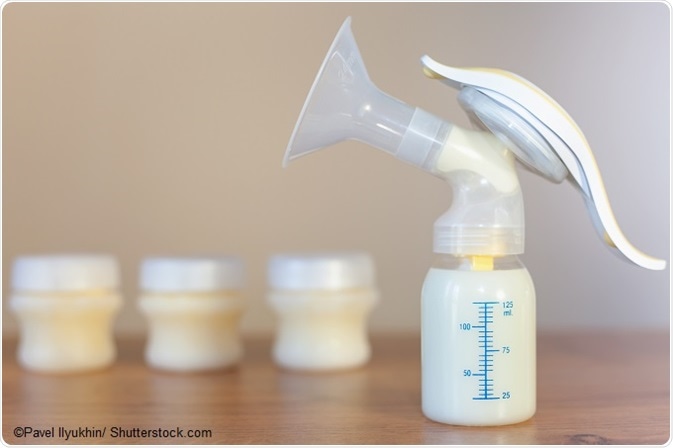Handling breast milk is important for mothers who use the breast pump to feed their babies. It is vital that complete hygiene is maintained.
Simple measures like washing hands before expressing and keeping the instruments and bottles and nipples clean goes a long way in making the practice a success.

Collection of breast milk
Breast milk is collected by pumping using manual, mechanical and electronic breast pumps. Pumped milk should be collected in clean glass or hard BPA-free plastic bottles with tight-fitting lids. Milk storage bags may also be used to stored expressed breast milk.
Disposable bottle liners or other plastic bags should not be used to store breast milk.
After each pumping the date and time should be labelled on the container. The child’s name needs to be mentioned if the milk is given to the childcare provider.
After pumping the breast pump should be thoroughly cleaned.
Storage of breast milk
After the milk is completely frozen the lid should be tightened on the container. At least an inch or so must be left on top of the level of the milk to allow it to expand while freezing. The milk that would be used later should be refrigerated or chilled immediately.
Milk can be stored in small 2 to 4 ounce packs for later use.
In the fridge the milk should be stored at the back of the freezer and not at the door.
Milk may be stored in the refrigerator up to three days, at a temperature less than 40 degree F.
Similarly breast milk may be stored in the freezer up to 3-4 months, at a temperature less than 32 degree F.
Milk may be stored in a deep freezer for 6 months or longer at a temperature less than 0 degree F.
Using and thawing stored milk
For thawing the milk before use one of the most important points to remember is to use the oldest expressed milk first. Breast milk does not need to be warmed. It can be served at room temperature or be given cold.
Frozen milk, however, needs to be thawed. It can be thawed by leaving the tightly lidded container in warm running water.
Breast milk should never be warmed in a microwave. Microwave can over heat the milk or create hot spots causing burns and more importantly may damage some of the beneficial nutrients, antibodies and cellular components of the breast milk.
It is normal for pumped breast milk to vary in color and thickness. Stored milk separates into layers. Cream will rise to the top as the milk warms. Before feeding the milk needs to be swirled gently to mix the cream of the milk.
Shaking the milk is not recommended as it may break or damage some of the cellular components of the milk. Temperature may be tested by dropping a few drops of the milk into the inner skin over the wrist. It should be comfortably warm.
Thawed breast milk should be used within 24 hours. If the milk is left at room temperature it needs to be used within 1 hour. Thawed milk should not be refrozen.
Any breast milk that is left in the bottle after a feed should be discarded. This is because the bacteria in the baby’s mouth can spoil the milk and make it unsafe. Small 4 to 6 ounce storages are thus helpful and they cause less waste.
If the stored milk has a sour or strange smell or if there is a doubt about its safety, it should not be used.
Further Reading